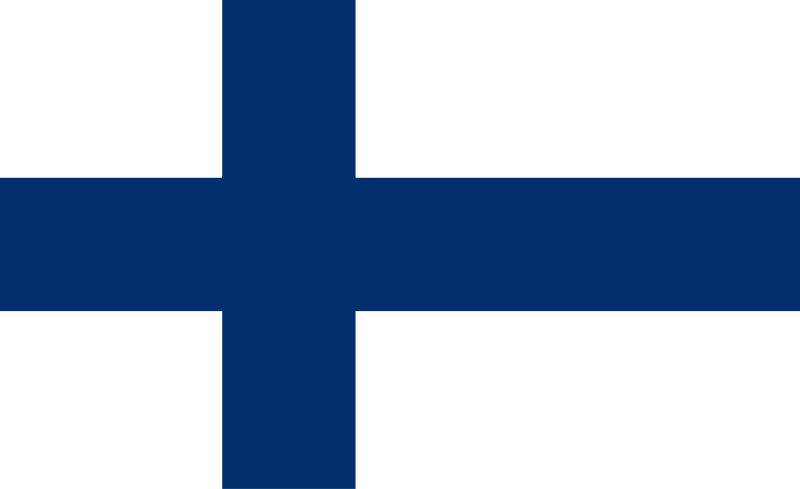
And now we’re in our regular weekly drop-in on World League previews prior to the tournament starting in about two and a half months. To be perfectly honest, this one’s shaping up to be another pretty meager post, like the last one was. Here’s the rundown:
Egypt
Japan
Iran
Netherlands
South Korea
Finland
Canada
Italy
Argentina
Serbia
Russia
France
Brazil
Germany
Bulgaria
Cuba
USA
Poland
Volleyball has had an interesting path in Finland. It was first introduced to the country nearly 100 years ago, but it was a good 30 years after its introduction that the sport had its own sanctioning body. Before that? It was governed by the Finnish basketball association, and not just for a year or two. Organized volleyball began in Finland in 1939, but the volleyball association didn’t form until 1959. Makes you wonder what they were waiting for, particularly as Finland played in the second-ever FIVB World Championship in 1952. They also played in ’62 (the tournament had a herky-jerky schedule in its first few editions — it’s quadrennial since 1970), ’66, ’78, and ’82, with 11th place in ’52 (which may well have been last place) the highest rank achieved. They haven’t been back since, though they’ve got a double-bye to round 3 in qualification for next year’s world championship. Finland have played the European Championship each year (biennial) since 2007 and will return for this year’s event.
Volleyball has become robust in Finland, with over 100,000 registered players and national teams for both the men and women at senior and all age-group levels. Beach volleyball is starting to take hold, too. While I wouldn’t really guess that beach tandems would get much practice at home, Finland is in fact host to the single most well-attended youth volleyball festival in the world, the Power Cup, and it’s held outdoors.
Finland first played the World League in 1993, and have every year since 2006. While they haven’t really sniffed overall victory, they’ve comfortably avoided having to play the qualifier, finishing between 7th and 13th each time. Last year they had a crushingly difficult pool draw, matching them up with Brazil, a traditional volleyball powerhouse, and Poland, the eventual World League champions. No doubt the highlight of the tournament for the Fins was their (23-25, 25-23, 25-21, 22-25, 15-9) triumph over Poland in the tournament’s first week. This pool also included Canada, who will again be in the Fins’ pool for 2013. So I’d say that stands to make those results a little bit more predictive, but the four matches between the two sides were split evenly. A straight-sets sweep for Canada, a straight-sets sweep for Finland, as well as a 4-set win for Canada and a 5-setter for Finland. Look for the Canada/Finland matches in this year’s World League — they come in week 5 — to be good ones.
The coaching position for Finland has been a bit of a revolving door. The Fins were previously coached by Mauro Berruto, who left the post effective in 2011 to coach the national team for his native land, Italy. Berruto’s replacement was Argentina’s Daniel Castellani, but Castellani himself only stayed through the London Olympic cycle. The hire for the 2016 Rio Olympic cycle, or at least that’s the hope, is Tuomas Sammelvuo, who only just last year was the team’s floor captain at the World League, playing outside hitter. Newly 37, Sammelvuo may well be the youngest coach at the World League. But what a better way to command the respect of your men, than to quite literally be one of them.
Sammelvuo leads a young team, just as he did a year ago you might say. Setter Mikko Esko was the only other player on the roster last year born in the 1970’s (’78, he’s two years younger than Sammelvuo), so he’ll likely be the only one this year. Outside hitter Olli Kunnari is rather amazingly an 11-year veteran of the senior national team despite still only being 31. The floor captain will now be outside hitter Antti Siltala, who has over 100 international ‘caps’ himself. Twin brothers Matti and Mikko Oivanen are also of note, middle blocker and outside hitter respectively. Konstantin Shumov should also see regular playing time in the middle. Though Finland does have its own professional league, all of the players mentioned in this paragraph have played professionally in other nations, doubtlessly for higher salaries than they’d get back home.
So are we looking at a winner?
They’ve got a very good chance to emerge from Pool C, and after that, who knows. They probably should count themselves a little bit fortunate that they wound up in Pool C. Maybe they’d finish top-three if they were in A or B rather than the likes of France or Iran, but maybe not. They get certainly easier competition in Pool C. The biggest roadblock to their advancement will likely be Canada (possibly Netherlands, but it’s probably too early in their development to expect it of them). They’ll beat up on Egypt and Japan, no question. They should probably beat up on Korea, too, but it’s not quite so clear cut in that case. But this is a program on the rise. Four years ago they had to play every round of world championships qualification. Now, they’re ticketed to the last round before the championship tournament itself, and by seedings they should expect to make it. This World League tournament will offer an important test some eight months in advance of that, as the Fins will make use of the opportunity to measure themselves against the world’s very best.
Add The Sports Daily to your Google News Feed!